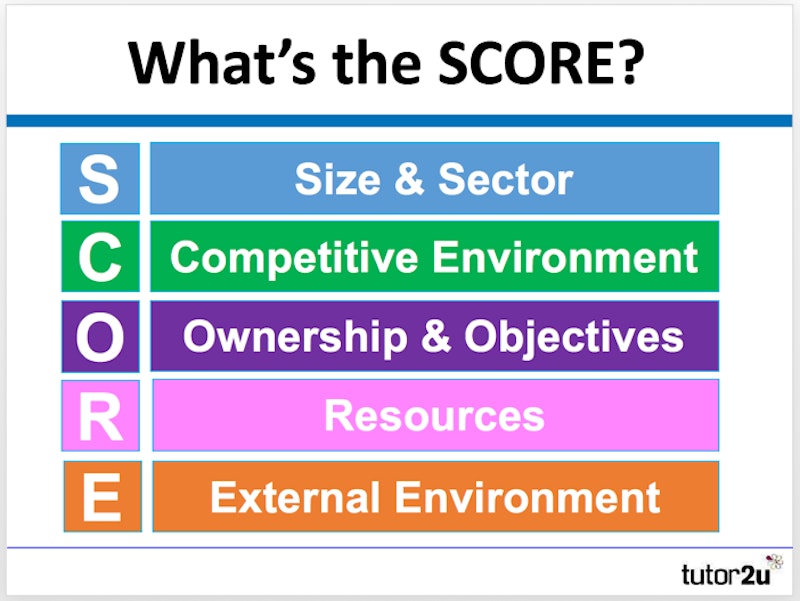Exam Support
Demonstrating Application - What's the SCORE?

8th January 2017
Making sure your exam answers are fully in context is a key part of success in A Level Business. Here's a great approach - SCORE - which helps identify key elements of the contexts you are provided in well-structured answers.
We introduced A Level Business students to the SCORE approach in our Strong Foundations workshops and we develop it further in our Grade Booster workshops as we fine-tune exam technique for Year 13 students taking AQA Business or Edexcel Business.
Here's what the SCORE acronym stands for:

S = SIZE & SECTOR
Factors to consider here include:
- How large is the business (e.g. revenues, number of employees, number of brands & business units)
- What sector does it operate in (e.g. public v private; primary / secondary / service, digital)
C = COMPETITIVE ENVIRONMENT
Factors to consider here include:
- In which markets and market segments does the business operate?
- How attractive are those markets (e.g. market growth rate, market profits, threat of disruption)?
- Who are the main competitors and what are their competitive advantages and disadvantages?
- Who are the key customers and buyers in the market and how much power do they have?
- How is the competitive environment changing (e.g. technological disruption, social change)
O = OWNERSHIP & OBJECTIVES
Factors to consider here include:
- Who owns the business?
- What is the type of ownership? (e.g private v public)
- Is ownership divorced from control (e.g. most shareholders are not directly involved in day-to-day management)
- What are the key corporate objectives and are these consistent with the aims and mission of the busines
R = RESOURCES
Factors to consider here include:
- Are the financial resources of the business adequate to support the chosen business strategy?
- Does the business have sufficient operational / production assets and capacity?
- How capital or labour intensive is the business and what are the implications of this?
- Does the business have intangible resources (e.g. brands, IP) that need protecting / developing?
- Does the business have sufficient resources overall to support planned investment?
E - EXTERNAL ENVIRONMENT
Factors to consider here include:
- What are the key changes in the external environment to which the business needs to respond?
- Overall, does the external environment pose more threats than opportunities (or the other way round)?
You might also like
Effective Use of Gearing in BUSS3
12th June 2016

BUSS3 Example Answer for an 18 Marker
13th June 2016

BUSS4 Section B Video Essay Guides
14th June 2016

Business Topics in 60 Seconds!
2nd May 2023